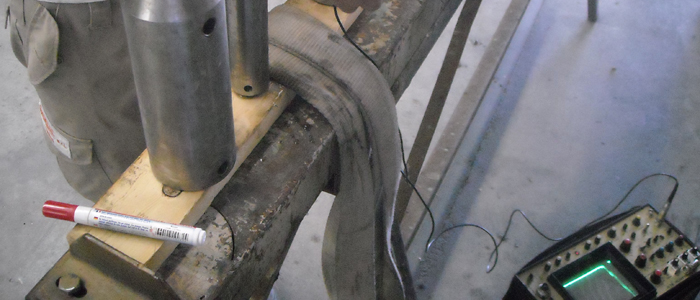Home » Non-Destructive Testing » Magnetic particle testing (MT)
MAGNETIC PARTICLE
TESTING (MT)
This technique can be applied on all ferromagnetic materials such as cast iron, carbon steel.
It is based on the attraction of ferromagnetic particles (usually fluorescent and dispersed in liquid) attracted to the material dispersed in the vicinity of any cracks.
It consists in the magnetization of the piece: in correspondence of cracks, surface and sub-surface defects occurs a deviation of the magnetic lines of force towards the outside thus forming a dispersed flow.
Sprinkling the piece with magnetic powders, both dry and in liquid suspension, they are attracted to the defect. The accumulation of such powders allows its highlight.
CHECKABLE PRODUCTS
Rolleds, forgeds, drawns, castings, castings, welds.
ADVANTAGES
It’s less laborious than liquid penetrant, in fact you do not need a perfect cleaning of the parts to be checked.
This methodology is particularly useful for the detection of surface defects especially in areas of difficult accessibility.
DISADVANTAGES
The disadvantage is that it can only be used on ferromagnetic materials; it is not suitable for examining the integrity of the surface of porous workpieces such as iron castings; it is ineffective for internal defects or too far from the surface. Moreover its use on high thicknesses requires large amounts of electricity.
AVAILABLE EQUIPMENT
- NR 2 MAGISCOOP 6000 CCA
- NR 2 MAGISCOOP 3000 CCA
- NR 2 SENTINEL HANDY MAGNA MP-A
MAIN REFERENCE STANDARDS
- UNI EN ISO 17638, EN ISO 23278
- ASME V Art. 7, ASTM E 709






